Ephemeral Prints: Part 1
A movement against the archival...
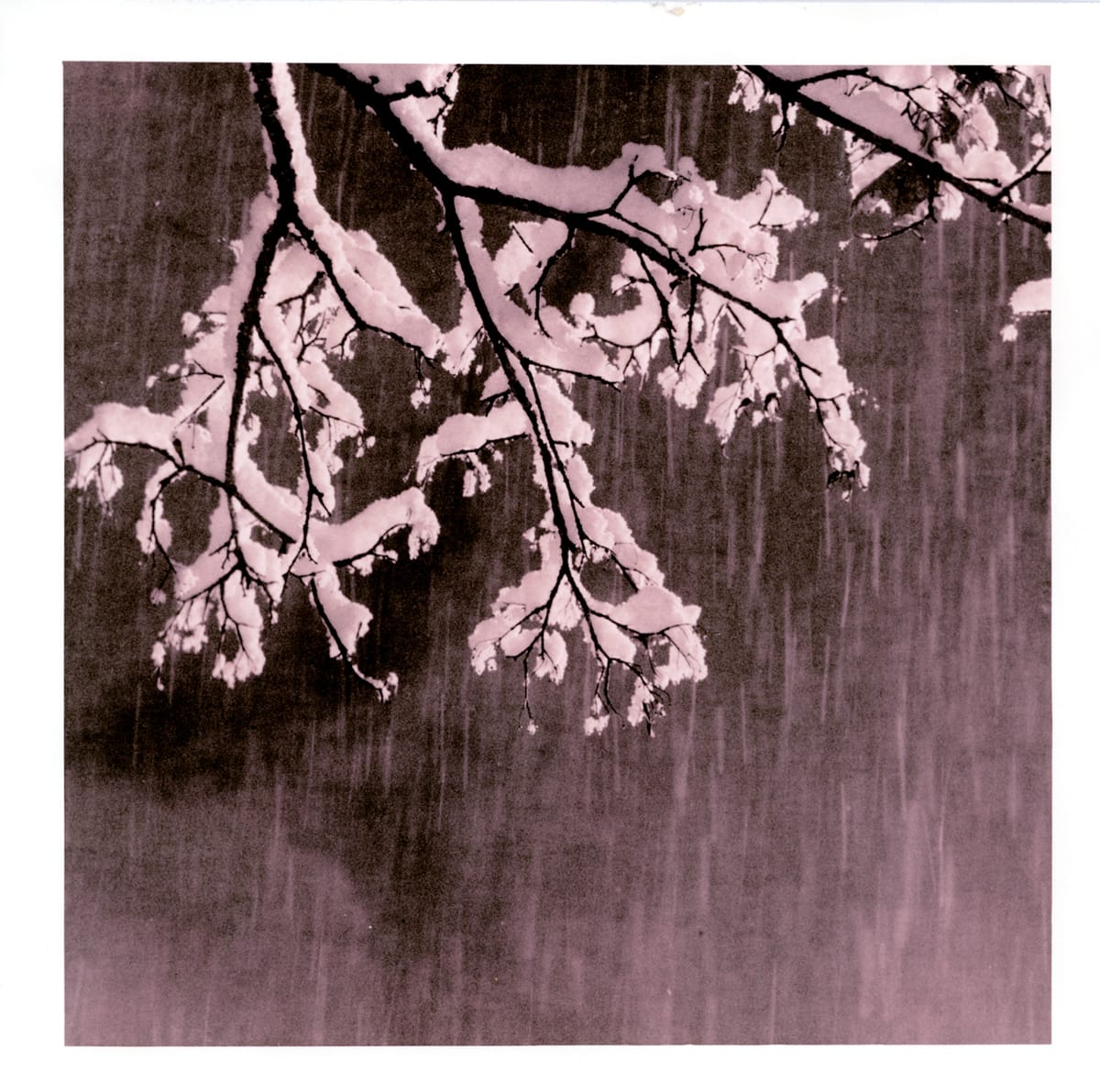
A couple of years ago I made a mistake with a print and rather than stop and fix it I cast it aside and continued with my printing work. (This happens often but mostly they go straight to the trash can.) I left this drying print out in the light and it began to take on color in the undeveloped sections where the undeveloped silver began to print out.
Anyone who has worked with photopaper is aware of the array of colors scraps of paper laying around the darkroom take on as the paper becomes more exposed to light. I have scraps that have evolved to lovely lavender, blues, pinks, and warm brown colors.
I had intended to pick this topic up again and ended up doing so when I revisited some old Spanish paper called Negra Portrene for some lith printing work. The lith prints themselves turned out well but I took a couple of prints but rather than fix them I decided to wash them and leave them exposed to the room light.
I was rewarded with some really extraordinary colors. The flaw or beauty depending on the viewpoint is that these prints will change over time and likely lose contrast.
Of course, this is the opposite of what Henry Talbot Fox was trying to achieve at the dawn of silver negative-based photography. However, I find it interesting in the world of silver gelatin printing where there is much emphasis on the archival qualities of the print.
We darkroom printers spend a lot of time fixing and washing finished prints and then treating them with sulfur or selenium in order to create this status of an archival print. There was a short interval in the move from wet printing in the darkroom to inkjet printing where the archival nature of darkroom prints was promoted as a fundamental difference between the two methods. Development of archival inks however has effectively nullified this advantage. On the extreme end of the archival spectrum is the platinum-palladium and carbon prints made of elements that are more impervious to the impact of moisture, airborne chemicals, and light. The archival nature of the process remains an enduring objective of most darkroom printers.
I find myself now exploring what it means to move in the opposite direction. The truth is that for the vast number of darkroom printers, their work will not outlast themselves. Unless one has a name like Weston or Adams there will not be generational collectors of our work nor museums interested in maintaining collections. Once the artist stops promoting their work their work will recede into irrelevance.
So why not create something with no concern for an eternal legacy? Why not something that will change over time and interact with the environment? Something unique and irreproducible.
I will try and document my experience and insights in this process.
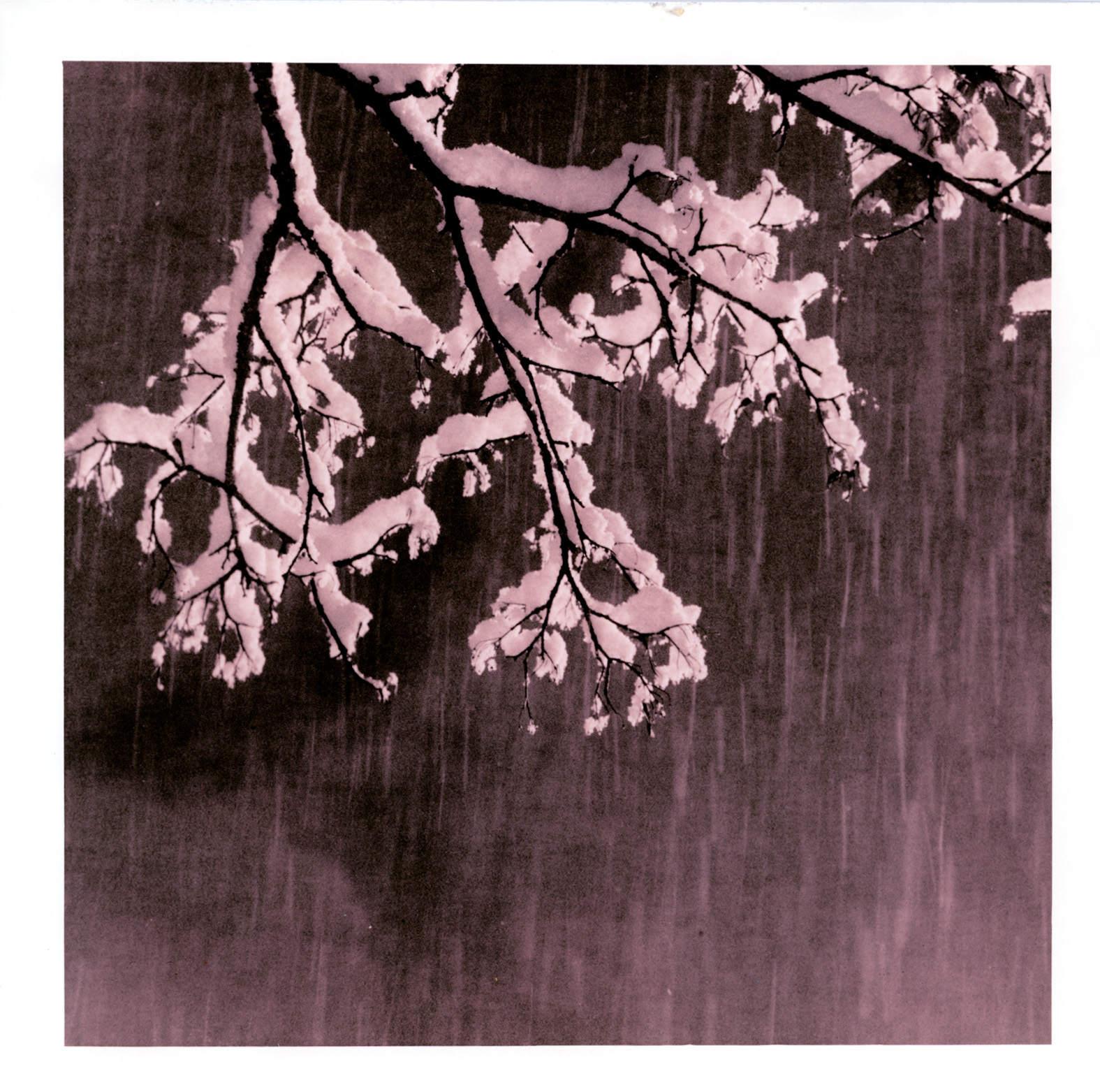
More Example Prints
I made a couple of ephemeral prints on Oriental Seagull which is a nice lith paper. These were developed in warm Moersch EasyLith.
This first image was a straight print. The pink color is mostly derived from the fact it was not fixed. Normally Oriental Seagull liths with a taupe that while warm does not verge on pink.
Here the pine in the background was the first to reach infectious development well ahead of the oak branches. The dark band at the bottom was improper easel setup. The image is nice and though I defeat the pine tree’s early emergence in the next version it stands out well in the composition here.
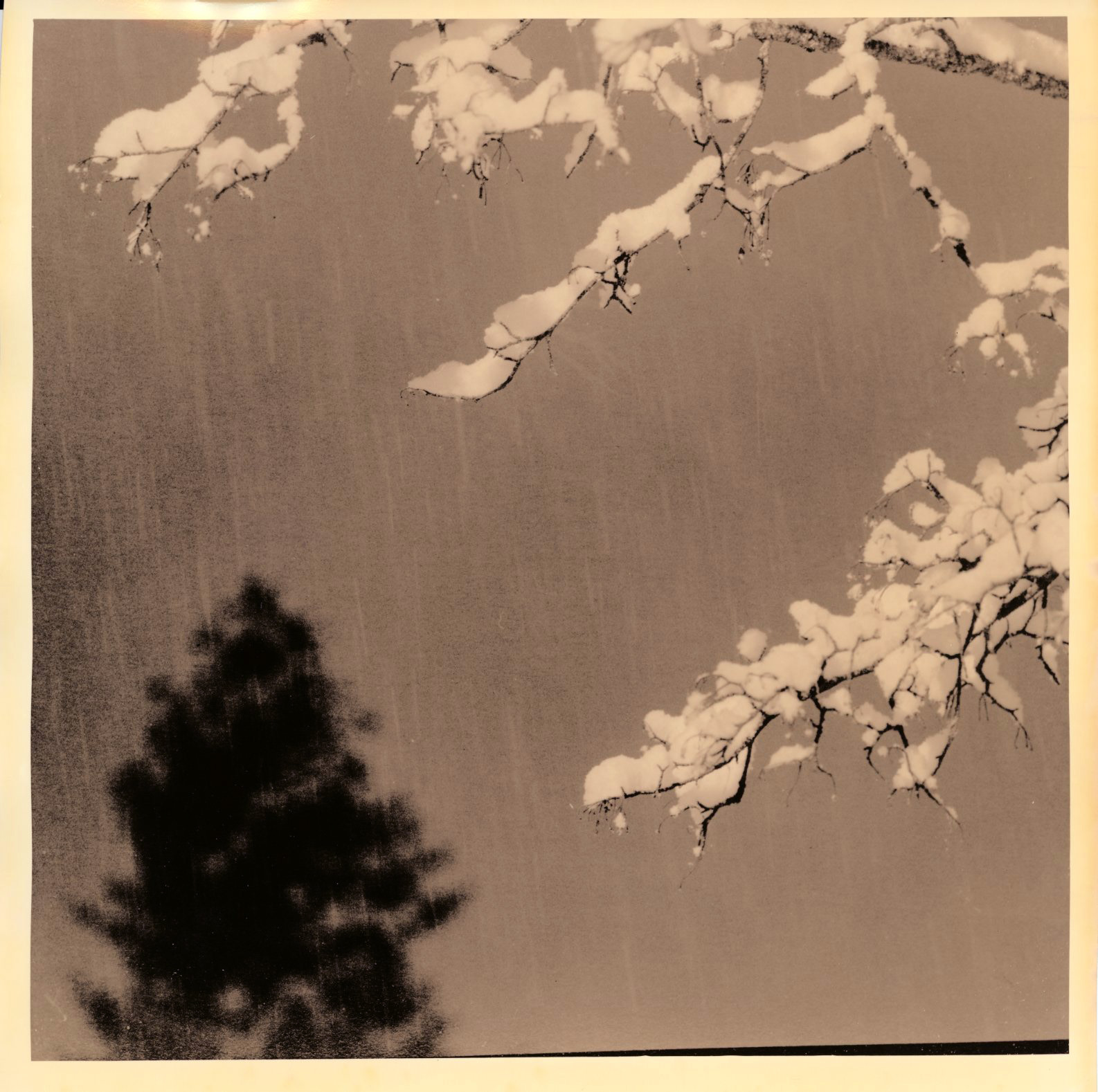
The next version burns the top in more to make sure those branches emerge early and the pine tree in the background is dodged out. Another interesting look, almost like the corner is illuminated.
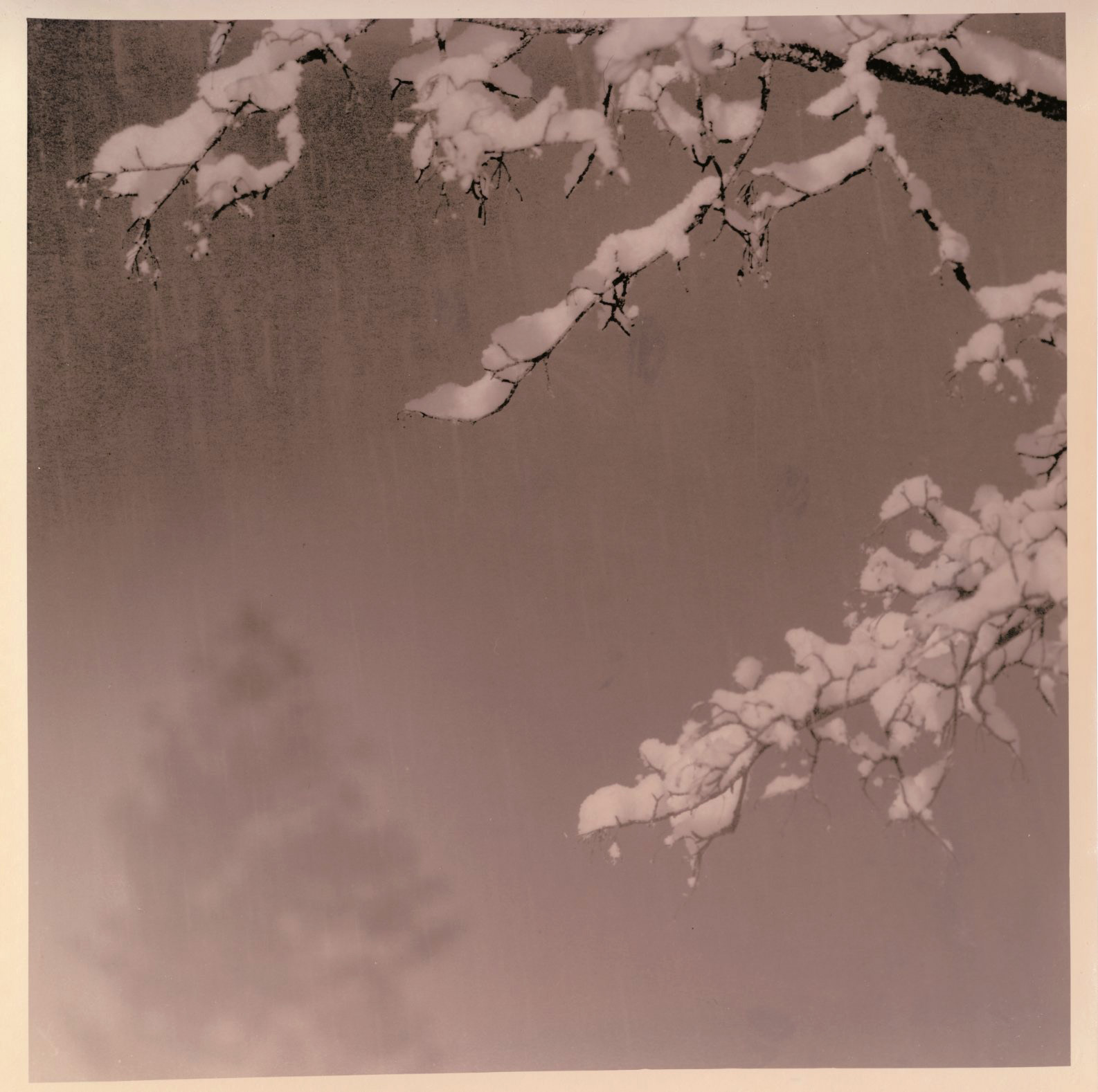
Technical Observations and Suppositions
Exposure to direct or indirect sunlight has an enormous impact on the print. Below is a version of the first print that was left in direct sunlight for about 1/2 hour. The color is much darker which reduces the contrast. The borders are not clear at all. A muddy brown pervades the tonal range.
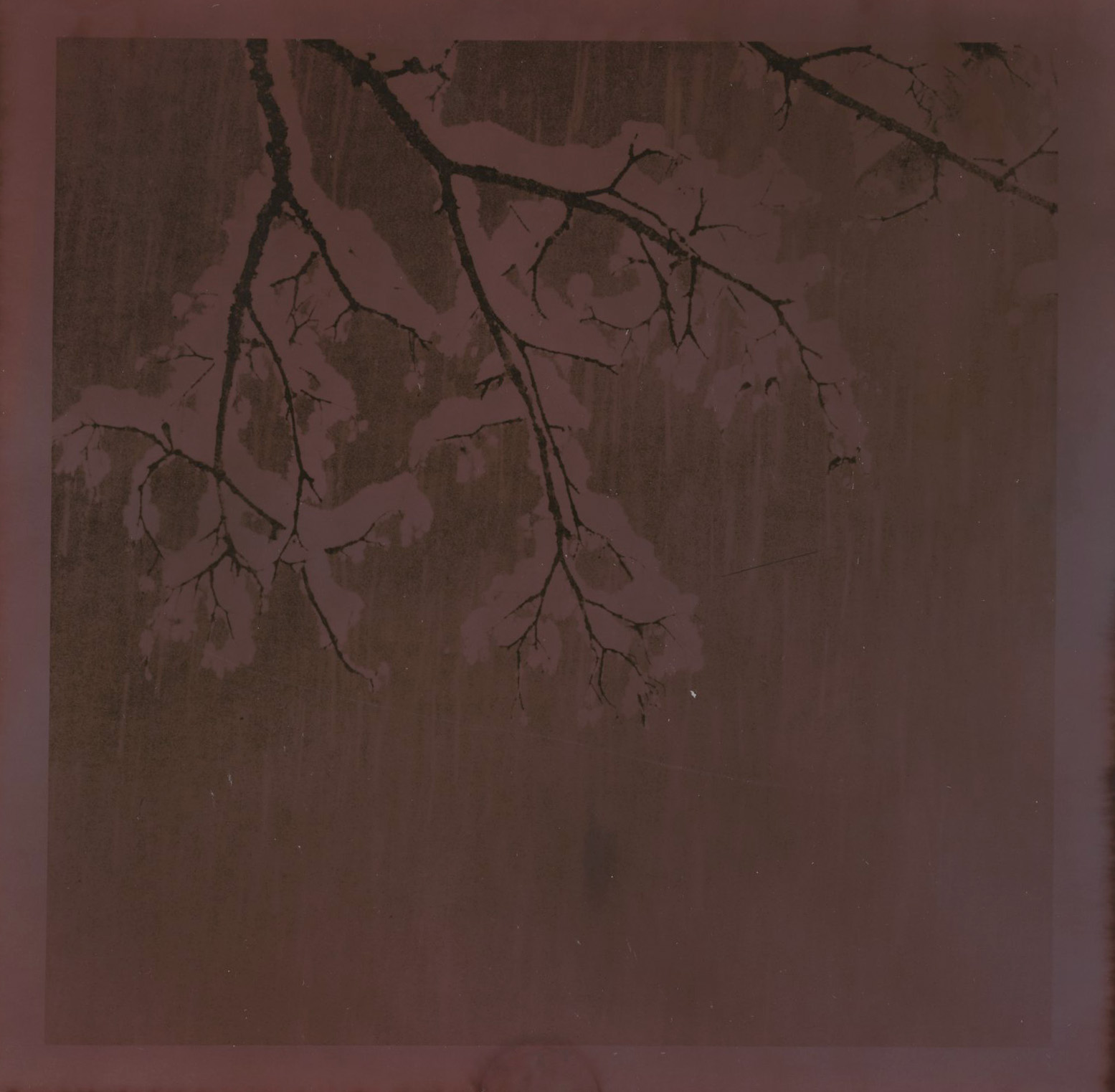
Washing the print may be important. It seems that some residual developer in the paper may continue to work slowly and fog the paper further. I have seen this most notably along the edges of the paper. I can’t say this is confirmed but it doesn’t help.
Keeping the prints in a low light condition when processing and drying may be helpful.
I believe the prints should be displayed on walls and in rooms without direct sunlight and limited exposure to indirect sunlight. The difference in the change of tone between a room with north facing windows on a sunny day and a well-lit room under artificial light is significant. The difference is essentially on the order of the two prints (daylight and not) above.
I believe the paper may be more sensitive to light while the print is wet. I don’t know why but this is my suspicion. It may be moisture facilitates the separation of the halide ion from the silver and facilitates the reduction to visible silver. Below is an example of some old undeveloped ORWO paper I left out to see what color would be created in room light. Unknown to me was a cloth elastic hairband which was moist was lying under the paper. The water clearly was drawn into the paper and emulsion. The result is a distinct pink ring on a faint blue-blue gray from the dry emulsion.
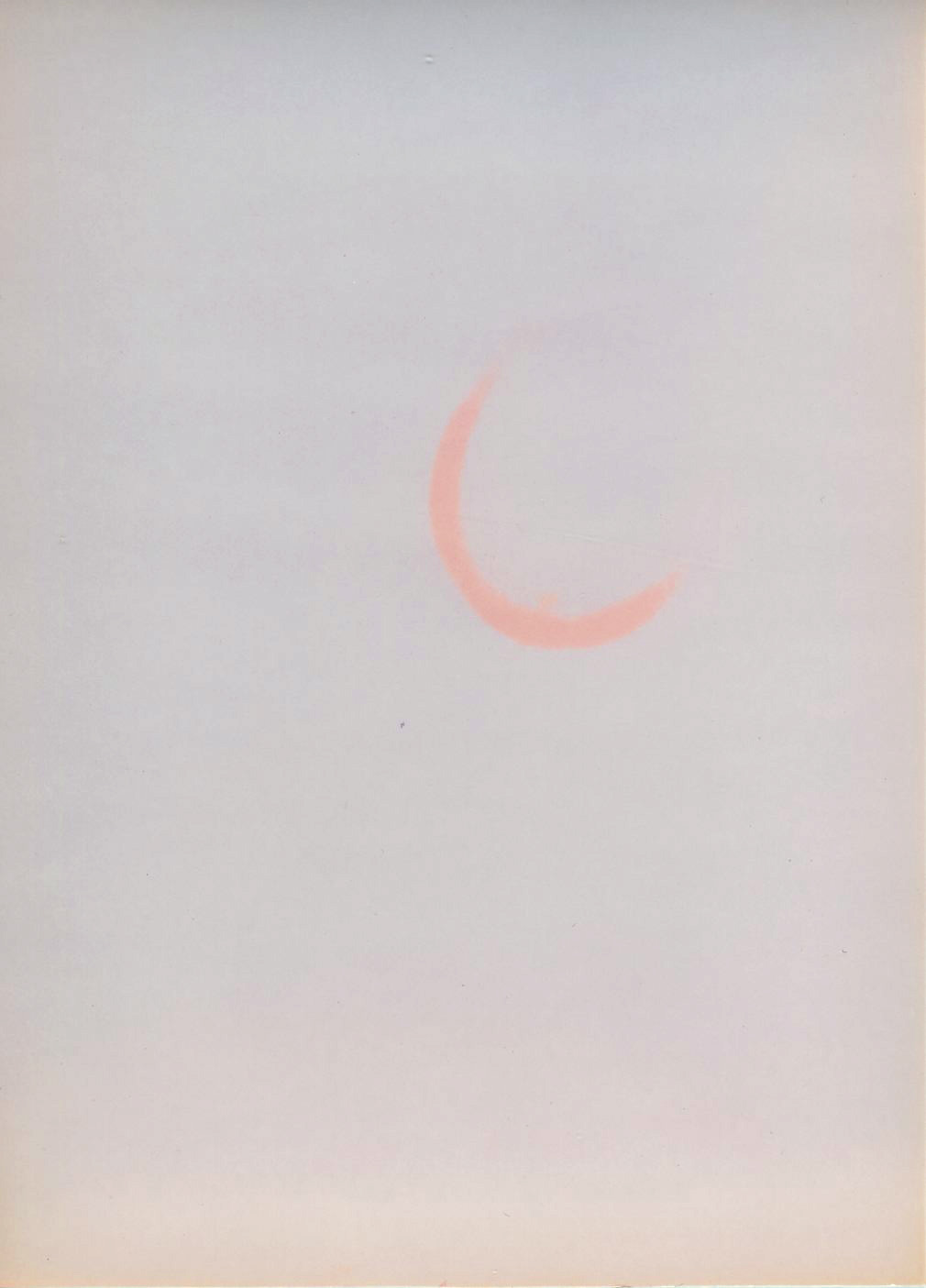
Different papers react differently. The colors can vary a great deal as does the sensitivity.
Warm tone papers seem to progress more slowly under room light than cool tone paper. This stands to reason in that warm tone papers are significantly slower than cool tone papers.
Exposure and some development is important. Lith is the primary development I am trying and because it typically gives some low level of development across the entire print this helps with the separation of the tones of the border areas that get no exposure. It may be that conventionally exposed and developed prints will have undeveloped highlights that will remain very light in tone.
Fixing under normal conditions (1+4 fixer for 1 minute) drains most of the color from the print and tends to restore it to its developed state. Well exposed paper will not fix completely and the borders may still have some residual color but it will be lighter and different. For instance, purple/brown may turn to light yellow. The example below was exposed to north facing windows in broad daylight. The fixed side shows the color returning more closely to the typical Oriental Seagull taupe when lith printed.
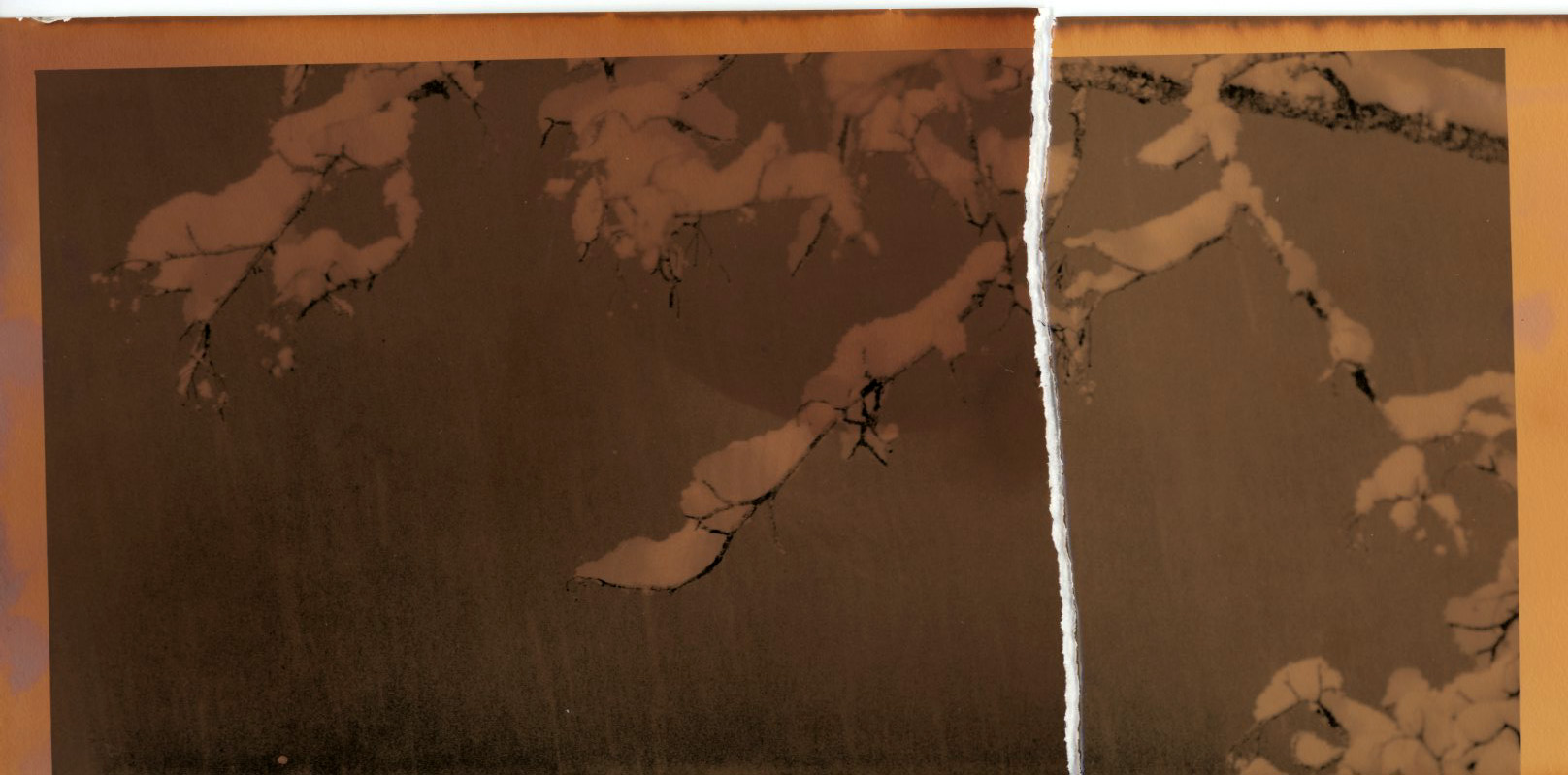
A dilute fixer solution can be used to slowly lighten a print that has been exposed to light. This tends to drain the color like full strength fixer but the transition can be controlled. (I used 30ml of 1+4 rapid fix in 500ml of water which is about 1% of full-strength fixer. This is probably single-use as 80 sheets of 8x10 is the fixer capacity which equates to 12.5ml of 1+4 fixer per 8x10 sheet.)
Abject Failures
Ilford ART300 paper is a disaster. It takes on a mottled look when developed in lith developer and the color and contrast are poor.


